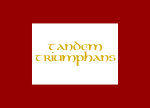Jacobite cause
| Jacobite movement | |
|---|---|
Participant in
|
|

Representation of The Jacobite 1745 flag.
|
|
| Active | 1688–1780s |
| Ideology | |
| Leaders |
|
| Headquarters |
Several headquarters: |
| Area of operations | Kingdom of Great Britain and Kingdom of Ireland |
| Size |
In 1745:
|
| Allies |
|
| Opponents |
|
Several headquarters:
In 1745:
Jacobitism (/ˈdʒækəbaɪˌtɪzm/ JAK-ə-by-tiz-əm;Scottish Gaelic: Seumasachas [ˈʃeːməs̪əxəs̪], Irish: Seacaibíteachas, Séamusachas) was a political movement in Great Britain and Ireland that aimed to restore the Roman Catholic Stuart King James II of England and Ireland (as James VII in Scotland) and his heirs to the thrones of England, Scotland, France and Ireland. The movement took its name from Jacobus, the Renaissance Latin form of Iacomus, which in turn comes from the original Latin form of James, "Iacobus." Adherents rebelled against the British government on several occasions between 1688 and 1746.
After James II was deposed in 1688 and replaced by his daughter Mary II, ruling jointly with her husband and first cousin (James's nephew) William III, the Stuarts lived in exile, occasionally attempting to regain the throne. The strongholds of Jacobitism were parts of the Scottish Highlands and the lowland north-east of Scotland, Ireland, and parts of Northern England (mostly within the counties of Northumberland and Lancashire). Significant support also existed in Wales and South-West England.
...
Wikipedia
